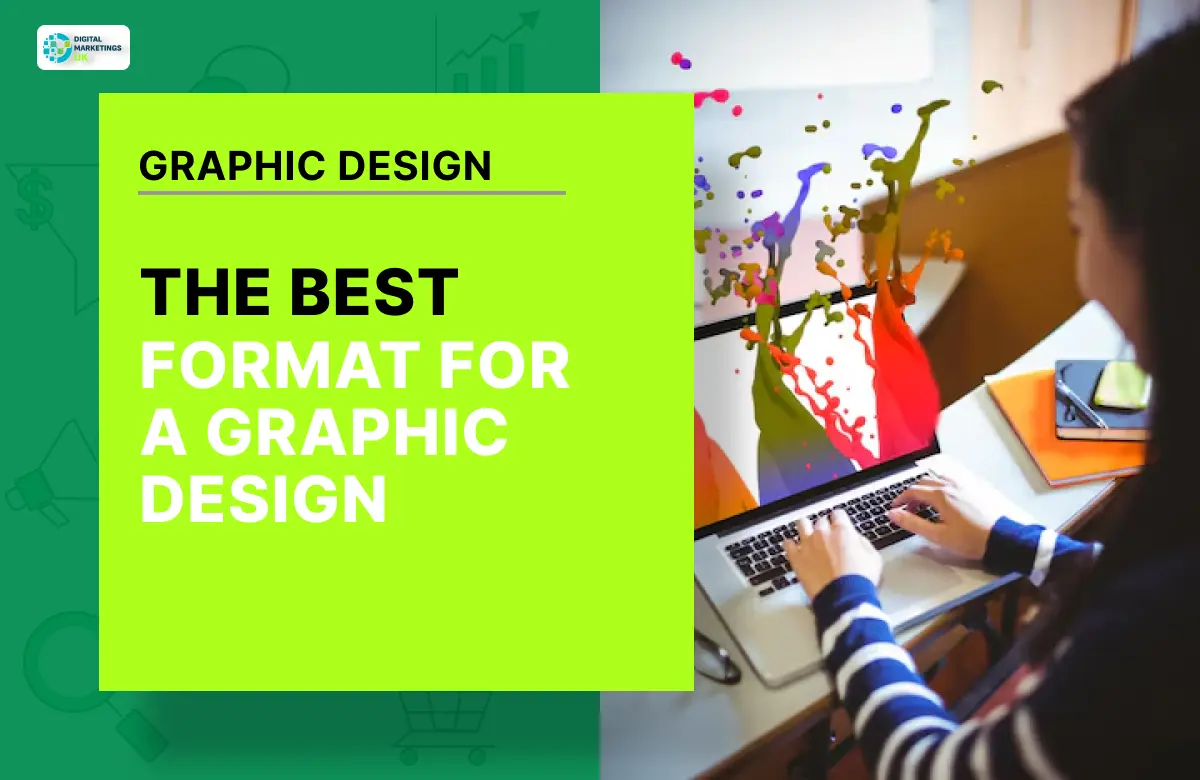Making an effective portfolio is crucial in graphic design when it comes to presenting to clients or employers a designer’s style and skill set. As we observe the increasing tendency to purchase digital services, and with the constantly changing nature of design business. Having a solid, content-rich portfolio is crucial to success in the design industry. The nature of the Digital Marketings UK is rapidly evolving and it is essential to know what format is appropriate to share your work.
The Ideal Format for a Graphic Design Portfolio
When deciding on the format of graphic design portfolio, one has to take an access. Its look, possibility of use, and possibility of sharing it and updating into consideration. Given the digital orientation of everything around us, the focus for graphic design portfolio today is, firs. And foremost, an online format; whether it’s a personal website, social media, or a dedicated Behance or Dribbble.
Website Portfolio
A website portfolio is easily the most professional and versitile way to showcase work to potential employers. For graphic designers, it also allows a complete customization over the layout, design and the feel of the site. Thus it requires the special treatment which can only be offered by flash. In today’s overpopulated Web, if you are diligent to set up a professional online portfolio for the purpose of presenting your work to potential clients or employers, then having a professional portfolio Web site is a wise idea.
Why Would Someone Construct a Website Portfolio?
Customization: It is fully customizable by design, layout, as well as branding. It’s an opportunity to input your designs into the interface and have the user experience reflect such.
SEO and Discoverability: This is true because when developing a website, it is beneficial that it is made to appear in the highest ranking of search engine results. They submit proposals and get to know that clients may find them through Google searches, thanks to proper SEO.
Professionalism: A website shows that you’re not playing around and adds legitimacy to what you do. It shows mastery when in comes to digital tools making it easier to woo anyone who may hire you.
Portfolio Management: A website is a way to have your portfolio with you and available for changes whenever you work on some new project, not using third-party services or old-fashioned files.
Key Elements of a Website Portfolio
Homepage: This is the first time you are creating an impression about your self to the visitors. Remember it is always best to keep it clean, professional and informative. It is important to state who is behind the work and, in addition. A clear invitation to act (e.g., for a consultation or portfolio view).
About Page: State who you are, what you believe in as a designer, and what you have learned and what you can do. A good bio puts into clients or employers certain perception about your background.
Project Pages: To supplement, a decision should be made to develop specific pages for every accomplishment, detailing the work performed. This section should contain clear visuals, ideally professional photos or designs and should also describe some of the objectives of the project, how you will tackle the project and some of the issues encountered in the project.
Contact Information: It is easy to get to you. Provide a link to your email address, phone number or even add a contact form.
Blog/Insights: A blog can help demonstrate to the audience ideas you may have about current trends, your work, and your knowledge. It can also help with Search Engine Optimiztaion.
PDF Portfolio
Unlike the portfolio on the Digital Marketings UK, the PDF portfolio can also be quite effective under some conditions. For instance when applying for some certain British Graphic Designing Services or when providing your gallery to the definite customer.
Why Choose a PDF Portfolio?
Portability: A PDF is handy to attach to an email or submit as part of an application to jobs. It is one of the ways of familiarizing someone with a specific number of your projects in merely one file.
Control over Layout: If you want your portfolio to appear or be formatted in a certain manner, you can and you will be able to design your PDF exactly to your specification.
Offline Use: As compared to an online portfolio, a PDF can be reviewed and accessed off line, this is advantageous when presenting your work in areas of low connectivity to the internet.
Key Considerations:
File Size: Make sure the PDF is not too big as large size may also slow down the opening time or may also take time to download in the emails.
Static Nature: PDF portfolios are non-interactive and the content is fixed. It cannot contain video, animations or even web design elements.



